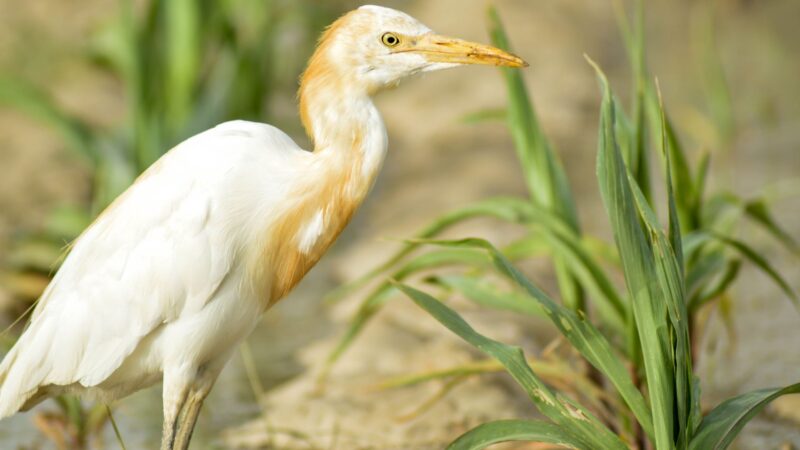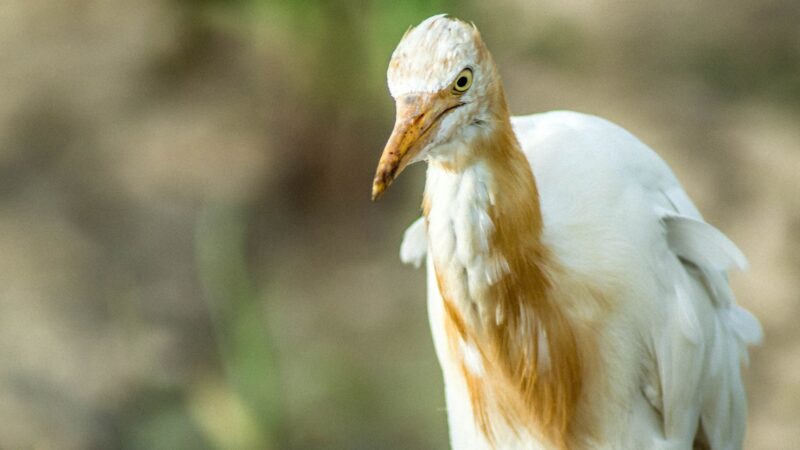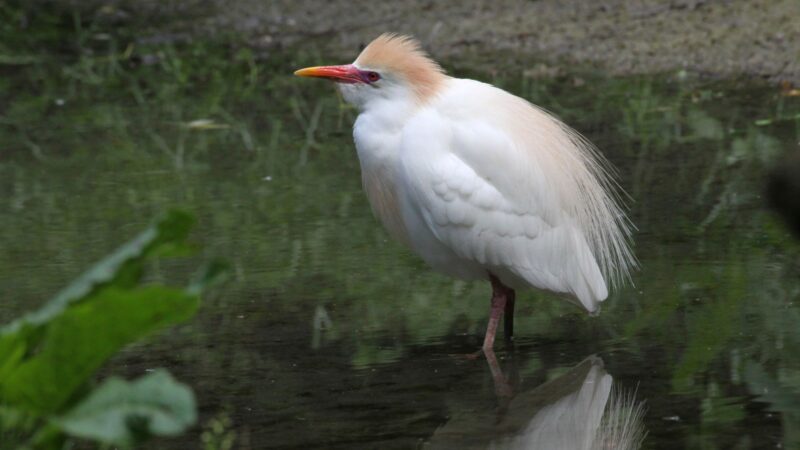Cattle egrets may pose a number of problems when they breed in colonies near human communities and other native bird habitats. As such, getting rid of them should be a top priority.
So, how to get rid of cattle egrets? You can do so by habitat modification, exclusion, hazing devices, installment of owl box, regular cleaning, and calling for professional help when necessary.
Want to know more about these birds and how to effectively handle them? Read further this article for everything you need to know!
All About Cattle Egrets

What Is a Cattle Egret?
Cattle egrets (Bubulcus ibis) is a medium-sized bird that is well-adapted to a variety of terrestrial habitats across North America. However, they are particularly fond of living close to areas that have livestock grazing them, such as cattle ranches, hence their names.
They can become quite a nuisance due to health concerns, the noise they make, and their foul-smelling odor. They can also feed on native bird eggs, damage aquaculture habitats, and become flight hazards to aircrafts passing by.
What Does a Cattle Egret Look Like?
Cattle egrets are small to medium-sized birds with an overall white plumage, short orange legs, yellow beaks, and thick necks. They have a hunched posture, even while standing straight. They are 46 to 56 centimeters in length with a wingspan of 88 to 96 centimeters and an average weight of 220 grams.
During the breeding season, adults will have a buffy plumage on their backs, necks, and heads. Their legs, eyes, and beaks will also turn a reddish color that is often vibrant. As such, cattle egrets are also sometimes referred to as the Buff-Backed Heron.
What Do Cattle Egrets Eat?
Their diets largely consist of insects such as spiders, grasshoppers, flies, crickets, and noctuid moths, but they also occasionally consume frogs and other small animals. Cattle egrets are considered opportunistic feeders and are not particularly competitive when it comes to food.
Related: How to Get Rid of Blackbirds From Bird Feeder? | 8 Effective Ways to Know
Where Do Cattle Egrets Live?
Since they are a highly adaptable species, cattle egrets inhabit a wide variety of terrestrial and aquatic habitats such as woodlands, trees and shrubs found in swamp water, marshes, grasslands, agricultural fields, forests, deserts, and mountainous regions.
Aside from cattle, cattle egrets are also associated with other livestock such as giraffes, elephants, wild buffalos, zebras, pigs, horses, sheep, kangaroos, geese, and fowls.
Where Do Cattle Egrets Nest?
Cattle egrets are known to nest in colonies that were previously established by other heron species. They either reuse old nests or construct new ones. Nesting sites are usually in shrubbery or trees near sources of water. Colonies may be as few as 100 pairs to as many as 15,00 pairs.
Their eggs are known to be a dull blue in color. One cattle egret clutch usually consists of 3 to 4 eggs. Both the male and female incubate and brood their nestlings.
Related: How to Prevent Birds Nesting in Roof? | Information and Control Guide
Can You Eat Cattle Egret?

No, cattle egrets are not considered edible due to their association with a variety of livestock species and should, therefore, not be eaten.
Are Cattle Egrets Protected?

Yes, cattle egrets are migratory birds and are hence protected by the Migratory Bird Treaty Act of 1918, which states that these birds, their eggs, and young should not be disturbed or hunted during nesting season.
Additionally, permits may be required when dealing with these birds, especially when lethal methods are used.
Related: How to Get Rid of English Sparrows | Practical Strategies and Methods
How to Get Rid of Cattle Egrets?

To protect your house, yard, building, agricultural field, and other properties, you can effectively get rid of cattle egrets by employing the following methods:
- Habitat modification: Since herons require tall trees to support their nests, removing or pruning perches (branches or trunks) right before breeding season can help them look less appealing as nesting sites. Remove old nests as well so that cattle egrets tend to return to them.
- Exclusion: Install bird netting over trees and other possible areas they can roost and nest in. The material should be durable enough to withstand harsh weather conditions. Netting should also be used simultaneously with other methods in this list.
- Hazing devices: Noise-making or visual deterrents can prove to be effective at getting rid of cattle egrets. You can use bird spikes, clappers, reflective tape, netting (made out of nylon, wire or plastic mesh), predator kites, flashing lights, lasers, and ultrasonic sound devices. However, make sure to move them around so that the birds do not get accustomed to the devices. You can also use a combination of auditory or visual devices for better results.
- Owl boxes: Owls are natural predators of cattle egrets. Installing boxes that they can use as habitats can attract owls in your yard and deter cattle egrets from ever coming into it due to fear of being attacked or killed.
- Clean-up: Dispose of any food sources and spillage that may attract insects and animals which, in turn, would also catch the attention of cattle egrets. Continue to do so regularly to make homes and buildings look less appealing.
- Professional help: If none of the abovementioned methods work at all, it’s time you call for some professional assistance from your local wildlife expert.
Related: How to Get Rid of Doves? | Effective Techniques for Bird Control
How to Prevent Cattle Egrets From Coming Back?
Do so by ensuring that the environment in your property is clean and free from insects and other possible prey. Continue using visual or auditory deterrents to prevent cattle egrets from roosting or nesting. If you see signs of activity from the species, immediately address the problem.
List of Sources
Ask a Biologist (n.d.) Cattle Egret. Arizona State University.
Ivory, A. (n.d.). Bubulcus ibis: cattle egret.
Merced County Association of Governments. (n.d.). Health Hazard: Cattle Egrets.
Ronnie d’Entremont. (n.d.) Cattle Egret Bubulcus ibis. Cornell Lab of Ornithology.
Telfair II, R. C. (2006). Cattle Egret.
U.S. Fish & Wildlife Service. (n.d.). Heron and egret breeding colonies: Recommended deterrent measures.
- How to Get Rid of Copperheads | Practical Guide - August 27, 2023
- How to Get Rid of Corn Snakes | What Makes Them Aggressive? - August 27, 2023
- How to Get Rid of Alligators | Safety Measures and Removal Methods - July 16, 2023
